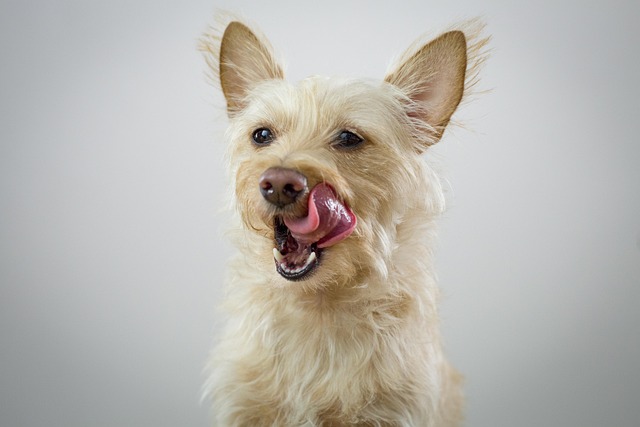
What is glaucoma in a dog?
You might notice your dog squinting more at mealtime or avoiding bright sunlight—these small changes could be early signs of a serious eye condition.
If you’re a new dog parent in the US—maybe you’ve noticed your Golden Retriever’s dry, flaky skin on your Chicago apartment couch, or watched your French Bulldog scratch at their elbows after a walk in Arizona’s dry heat—you’ve probably thought: Do I need to exfoliate my dog’s skin? And if so, how? It’s easy to panic when you see those little white flakes, but exfoliating a dog’s skin is all about gentle, dog-specific steps—no harsh scrubs like you’d use on yourself. Let’s break it down simply, with what works, why it matters, and how to stay on track with local pet rules.
First, let’s keep the science straightforward: A dog’s skin is way thinner than yours—only about as thick as a sheet of paper—and has a delicate pH balance. Over time, dead skin cells can build up, especially if your pup has dry skin from indoor heating (common in Minnesota winters) or low-humidity climates. This buildup can make their skin itchy, lead to dandruff, or even block hair follicles. Exfoliating helps slough off those dead cells, but using human products (like your body scrub) will strip their skin’s natural oils and cause irritation. Take Lisa, a first-time owner in Texas: She tried using her sugar scrub on her 8-month-old Corgi, Max, thinking it’d fix his dandruff. A day later, Max was scratching so much he had red patches. Her vet explained the mistake—dog skin needs gentle, pH-matched products—and recommended a pet-safe exfoliating shampoo. Within a week, Max’s flakes were gone.

So here’s how to exfoliate safely, step by step: Start with the right tools. Pet-specific exfoliating shampoos (look for ingredients like oatmeal or aloe to soothe) are the easiest option—they work while you bathe your pup. For extra gentle exfoliation, use a soft rubber brush (like a Kong ZoomGroom) or a microfiber mitt—avoid wire brushes, which scratch. When bathing: Wet your dog with lukewarm water (hot water dries skin!), lather the shampoo, and gently massage in circular motions—focus on flaky areas like the back, shoulders, and elbows, but skip sensitive spots like the belly or face. If your pup squirms, pause and give them a tiny treat (like a piece of freeze-dried chicken)—positive reinforcement turns bath time into bonding, not a fight. Never yank the brush or scold them; punishment will make them fear exfoliation, and stressed dogs hide discomfort. Rinse thoroughly (leftover shampoo causes irritation!), then pat dry with a microfiber towel. Aim to exfoliate only once every 4-6 weeks—too often strips oils.
Now, let’s tie in rules and community habits that matter. Every US state requires core vaccines (while exfoliation doesn’t directly relate, regular vet visits—mandatory for vaccine updates—let your vet check your dog’s skin health and recommend products, especially if your pup has allergies). Skipping checkups could mean you miss underlying issues like thyroid problems (a common cause of dry skin) and might lead to fines in states like California or New York. If you live in an apartment, clean up loose fur and flakes with a pet-safe vacuum—neighbors won’t appreciate dandruff drifting through vents. When you walk your dog post-exfoliation, avoid dusty trails or areas with tall, dry grass (they can irritate freshly exfoliated skin)—stick to well-watered parks. And always clean up their poop on walks—cities from Seattle to Boston have fines up to $300 for leaving waste, which spreads germs to kids and other pets.
Exfoliating your dog’s skin isn’t about making them “perfect”—it’s about keeping them comfortable. With gentle products, positive care, and follow-through on local rules, you’ll have a pup with smooth, itch-free skin—and that means more snuggles and fewer scratchy nights.

You might notice your dog squinting more at mealtime or avoiding bright sunlight—these small changes could be early signs of a serious eye condition.

Let’s set the scene: It’s a sweltering Phoenix afternoon—105°F outside—and you rushed your 2-year-old Lab mix, Cooper, on a quick walk to “get it over with.”

Let’s get real: You’re in your Miami apartment, watching your 3-year-old Corgi, Loki, struggle to climb the stairs to your second-floor unit.

Many dog owners brush off occasional scratching as just “dog behavior,” but persistent itching often signals something more—like a food allergy.

You might first notice your dog scratching more than usual—chewing at their paws until the fur looks thin, or rubbing their face against the couch nonstop.

Let’s be real: You’re standing in your Chicago apartment, watching your 3-year-old Beagle, Max, huff and puff just to climb onto the couch.